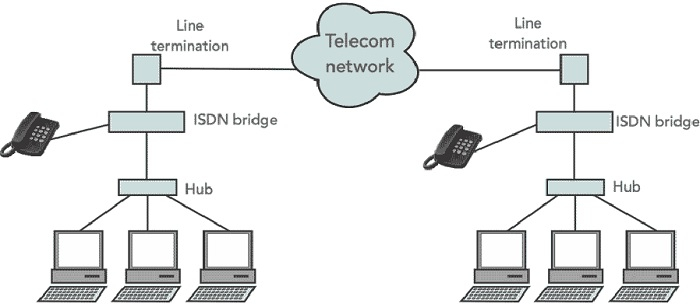
 Data Structure
Data Structure Networking
Networking RDBMS
RDBMS Operating System
Operating System Java
Java MS Excel
MS Excel iOS
iOS HTML
HTML CSS
CSS Android
Android Python
Python C Programming
C Programming C++
C++ C#
C# MongoDB
MongoDB MySQL
MySQL Javascript
Javascript PHP
PHPPhysics
Chemistry
Biology
Mathematics
English
Economics
Psychology
Social Studies
Fashion Studies
Legal Studies
- Selected Reading
- UPSC IAS Exams Notes
- Developer's Best Practices
- Questions and Answers
- Effective Resume Writing
- HR Interview Questions
- Computer Glossary
- Who is Who
What are the different types of ISDN?
ISDN stands for integrated service digital network. It is a telephone switched network which integrates voice and data over a digital line simultaneously. It also provides packet switched networks.
ISDN supports a variety of services which are as follows −
- Voice calls
- Video texts
- Electronic mail
- Database access
- Facsimile
- Teletext
- Data transmission and voice
- Connection to internet
- Electronic Fund transfer
- Image and graphics exchange
- Document storage and transfer
- Audio and Video Conferencing
The figure given below depicts ISDN −

Channels of ISDN
ISDN has mainly three channels, which are as follows −
B-channel − It offers a speed of around 64kbps, which can be used for home purpose.
D-channel − It offers speeds ranging from 16 to 64 kbps. It is used in signaling of B channel. It offers data in small amounts.
H-channel − It offers a range of speeds 384kbps, 1536kbps, 1920kbps. It is used in large organizations where high speeds are required.
Access Interfaces
There are several access interfaces to the ISDN, which are as follows −
Basic rate interface −It allows us to send small amounts of data at lower speeds.
Primary rate interface − It allows us to send large amounts of data at higher speeds.
Broadband ISDN − It relies on fibre optics. we can send data at extremely high speed from one place to another. It is highly reliable.
Narrow band ISDN − It is used for sending small data over long distances like telecommunications.

